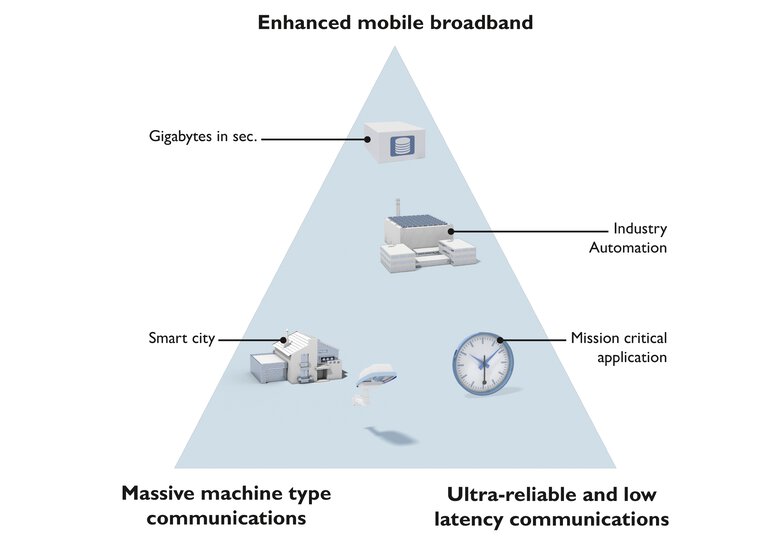Industrial 5G, the next generation of wireless technology, will provide reliable, high-speed, and low-latency connections for a large number of users. This will enable flexible, autonomous, and efficient processes from production to logistics in the future.
What exactly is Industrial 5G?
5G is the latest cellular standard offering high bandwidth, real-time capability, high reliability, security, and support for large numbers of users.
Basically, 5G is the first cellular generation to satisfy industrial sector demands, enabling intelligent wireless communication between machines and applications. Besides, enables private networks for flexible, sustainable network connections in mobile or highly flexible applications.
Industrial 5G is the perfect technology for Industry 4.0. It provides high levels of flexibility, usability, and efficiency that will enable smart factories and the IIoT.
5G technology’s features and characteristics

Industrial 5G provides higher performance than earlier cellular standards, with features like low latency (ultra-reliable low-latency communication, URLLC), high connection density (massive machine type communication, mMTC), and bandwidth (enhanced mobile broadband, eMBB), as well as comprehensive IIoT connectivity and greater flexibility.
Industrial 5G enables customized properties to be assigned to each application, granting specific resources in a private network. This provides a triangle of functions, delivering enhanced flexibility and control.
In the future, it will be possible to create consistent private 5G networks for specific applications. These applications will replace the current mix of wireless and wired technologies (e.g. WLAN, WirelessHART, GSM, LTE).
Private networks – an opportunity for the industrial sector

5G technology offers the industry the advantage of building private networks. This allows the control of the properties and reliability of the network. These networks, also known as NPNs or local networks, are distinct from public networks.
A private 5G network is a standalone communication infrastructure, using several antennas connected to a 5G base station. This provides wireless coverage to a specific area, such as a factory or private property. Devices in the area can then connect to this independent network instead of the public cellular network.
A private network provides increased flexibility for companies, allowing them to track, store, analyze, direct, and configure data traffic to better suit their needs. This offers an advantage over traditional wireless solutions that rely on license-free frequency bands and experience performance losses when the frequency spectrum is crowded. Private 5G networks can be completely isolated from public networks or exist in hybrid forms where resources like base stations are shared. It is also possible to fully integrate private base stations into the public network while ensuring Quality of Service with virtual private network resources like network slicing or APNs.
Our commitment to the area of Industrial 5G
Phoenix Contact, in collaboration with Quectel and Ericsson, has developed the first industrial 5G router for use in private 5G networks. As a result, the connection of machines, controllers, and other industrial devices, enable for optimizaiton for resource utilization, priority, and behavior.
Phoenix Contact is a founding partner of the 5G-ACIA body (5G Alliance for Connected Industries and Automation), an alliance of companies dedicated to representing the industry in the development of 5G standards and regulations. Consequently, the association aims to discuss and assess the technical, regulatory, and commercial aspects of Industrial 5G.
The progress of 5G in the industrial sector

5G has been around for some time, but its full potential in the industrial sector has yet to be explored. Instead of launching a specific tech, 5G is being rolled out in stages, each offering different capabilities.
Release 15 (2018) enabled broad bandwidth, Release 16 (2020) introduced high connection density, and Release 17 (2022) enabled a low latency period.
Phoenix Contact is working with 5G infrastructure providers to provide the most up-to-date 5G solutions and standards.
Other New Communication Technologies
Certainly, Phoenix Contact, a technology leader with 30+ years of experience in industrial communication, is at the forefront of developing the new cross-manufacturer communication standard for automation. This includes OPC UA, TSN, SPE, and 5G, which will form the communication of the future. Phoenix Contact is actively involved in all key standardization committees to help shape this new standard.
Find out more about the new standards on our webpage.


